As I am writing this article Mammoth Hunters (the company I founded) is one week into a fund raising campaign through Crowdcube España, an equity crowdfunding platform (check the campaign here). This is not my first experience with crowdfunding. Our first “round” was a reward-based crowdfunding on Indiegogo were we raised 20.420 € from 238 people in 1 month (here is the link) with a lot of sweat and effort.
This time however we have shot through the sky! We reached our 80k goal in 36h and raised 100k in 48h, as I write the marker shows 123.810 € and 98 investors .
Crowdfunding has become a new amazing way to raise money. It is really a revolutionary concept with deep social implications and a great way to open to normal people investment opportunities previously reserved to wealthy investors. However it is not a panacea. Preparing a campaign can be painfully hard and the chances of reaching your goal are low. Since you make the fund raise a public affair, a failure can blow your business at one.
In this article I will give you insights into how I successfully planned and executed two very different, but successful crowdfunding campaigns. I’ll also share my opinions on the differences between them and when to utilize them.
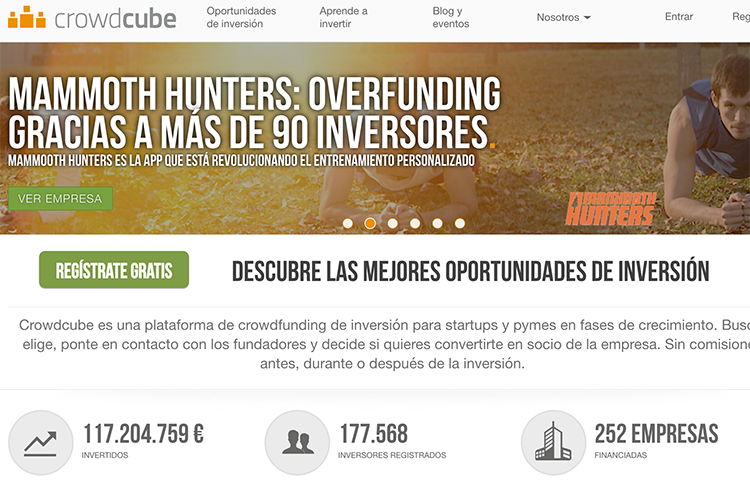 1. Read The Instructions
1. Read The Instructions
This might seem obvious but I am still amazed on how many people go into a crowdfunding without reading about the subject, thinking that it’s just about setting up a campaign and letting things run on their own.
There might be a few exceptional cases where this might work. But for the vast majority of us, the only option to succeed in crowdfunding is to prepare and execute very well. There are plenty of resources that help you such as the Indiegogo’s manual that I used for our first campaign. Crowdcube has also provided a very detailed checklist of what you do.
USE THEM! Seriously, these are people who know their business. If they put together a manual, these are definitely the best practices. Do not try to recreate what has already been done.
2. Crowdfunding Is Sales
This, to me, is the most important insight. Whether you are doing a reward-based crowdfunding or an equity crowdfunding, you are doing a sale. Follow the basic rules:
- Segment your leads.
- Assign conversions probabilities and lead value to each segment.
- Craft personalized pitches.
- Give good value.
Segments
When we did our first reward-based crowdfunding our audience was FFF (friends, fools and family). My segments where based on two parameters: Proximity of circle and language. So I had my “close family”, “extended family”, “close friends EN”, “close friends ES”… Then I also created some additional special segments for e.g. “MBA professors”, “High net worth friends”.
For my second crowdfunding it was a lot easier, our main target segment was our users, but I als
o segmented by family, friends and professional investors.
For each segment I crafted a personalized email. For my first crowdfunding I used a canned responses Gmail plugin to improve productivity. Now I am a fan of MailChimp.
Value and probability
It might sound a bit cynical, but not everybody is worth the same. Check the following graph of our current crowdfunding, you’ll see that 83% of our investors put 1000€ or less, but they account for only 17% of the round.
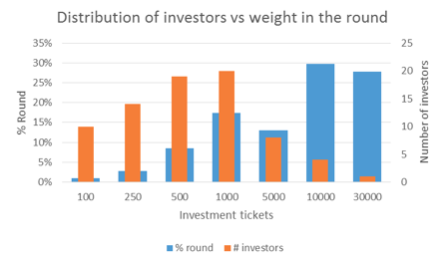
Since your time is finite, you need to prioritize your efforts. Rank your leads by probability of success and their worth to you. Then put them in the following matrix to decide what to do with them:
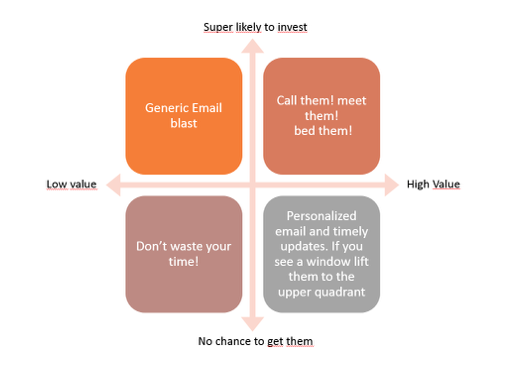
Craft Personalized Pitches
Continuing with the case in my first crowdfund I crafted emails in different languages and with different emphasis. For family and friends it was more emotional. A more professional approach for MBA professors. In the current crowdfunding, the pitch aimed at users was more focused on product features whereas the one to professional investors was only about growth metrics.
Here is where good copywriting helps a lot. Use your close network for feedback. First thing I did is send the email to my close family. At the end of the email I asked them if they felt the pitch was convincing and if they had any improvement recommendations.
Offer Real Value
In a reward based campaign perks are everything. When it comes to equity crowdfunding, investors put money to get a financial return. However, adding a couple of good perks might help them decide put 500 € instead of 400 €.
Find something of value, but not too complex to deliver. In our first campaign we offered t-shirts as a reward. This proved a nightmare, it took us several months to send them all and even now some people have never received them due to a deficient post service.
Most of the time you want to give as rewards your own product. In our case, we give yearly or lifetime subscriptions. The first advantage of these rewards is that they are driving new customers in that might refer other users and thus help you grow. The second advantage is that usually they cost you very little (just COGS).
3. Plan Plan Plan … EXECUTE!
I spend 2 months preparing the crowdfunding I am running now and it’s not by accident that we reach 100k in 48h, I planned for it.
Get everything ready long before starting: make your email list, write your messages, get phone numbers, prepare a very good pitch on the platform web site, and make a very good video (check this one or this one for examples). Have it all ready 2 weeks before starting the round and then follow this schedule:
Send a pre-launch email 10 days before announcing the event:
- Start with phone calls and try to close as many deals as possible.
- Schedule meetings during the round with investors if you are doing an equity round.
- Prepare a launch event
- Do an early bird open of the round 2 days in advance for committed investors so you don’t start with the count at “0” when you launch the campaign.
- Kick off email.
- Keep a score of successful deals.
- Follow up emails half way through the campaign.
- Do a final push last day.
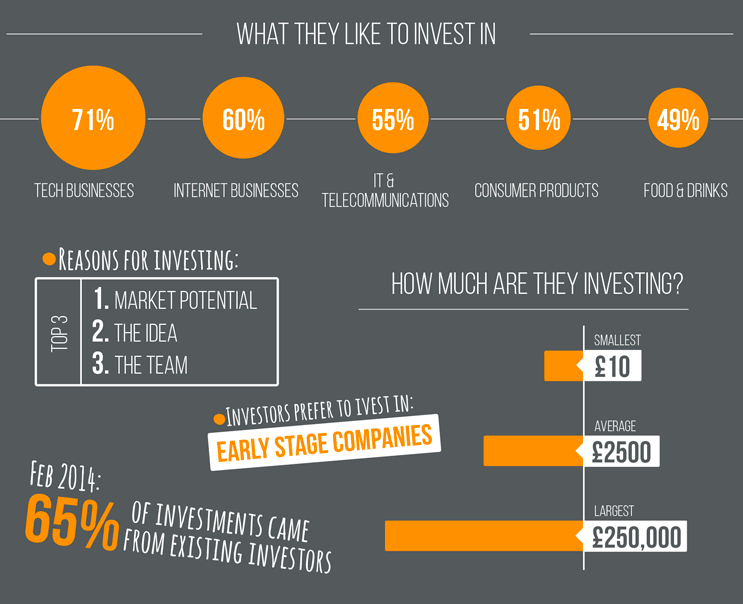
Utilize Your Team
You will surely be doing the crowdfunding campaign with your co-founders. But try to engage more people: your partner, siblings, parents, close friends… whoever! Crowdfunding is hard and any help is much appreciated.
The fact is that asking for money makes many people feel uncomfortable and it’s easy to keep on postponing a phone call or a spammy email. If you are leading the round, then consider the rest of the team as your salesforce. Define weekly targets and personal quotas. This, of course, has to be decided as a team, but then you will have to push them to reach their goals.
In my first campaign I was constantly asking my partners how they were doing and pushing when they were a bit lazy. We aimed for 5.000 € per week and we stuck to the plan, hence we finished the round.
4. Start With The Round Closed
Facts are sobering. This article estimates that only 13.88% of the campaigns of Indiegogo reach 75% or more of their goal. I might be harsh but to me this just shows that a lot of people didn’t do their job.
In both campaigns I ran, I knew from day one that we would close the round. Otherwise why should I waste my time? I can’t stress enough the fact that crowdfunding is exhausting and if there is no ROI, stay away from it.
This is how I closed my round before starting:
- I send a prospective email with a basic pitch and a simple Google form: “would you invest? YES /NO” and “If yes How much?”.
- I got 200 answers with a total amount of 180k €.
- I identified 4 top investors who had pledged more than 10k €. I sent them personalized emails asking for a phone call.
- I just got 1 answer and spend 2 h in the phone, but I closed a deal for 30k €.
- Then I send a generic email with more info and my phone number to the other 146 potential investors asking for a confirmation.
- 80 of them replied confirming the pledge and becoming my VIPs.
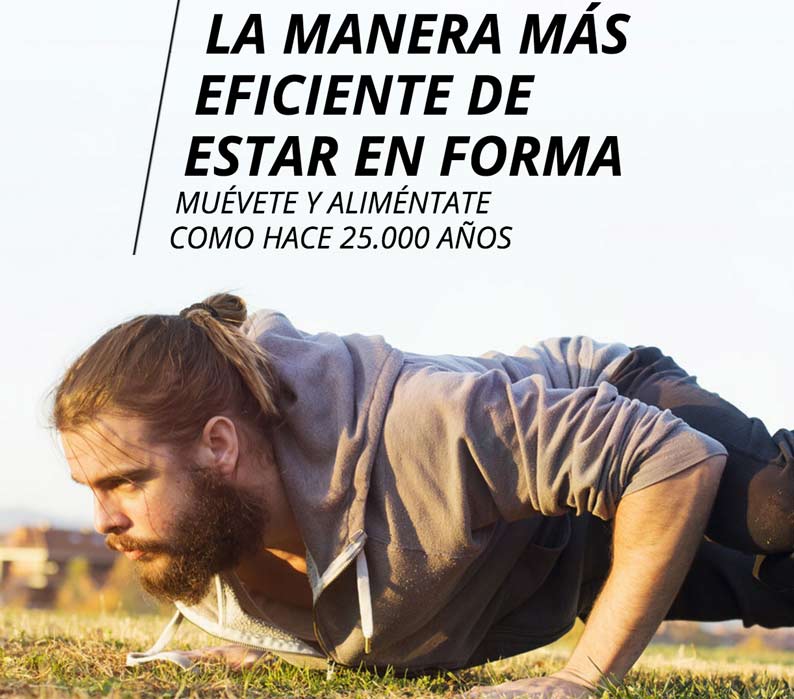
- I got several phone calls and I spend as much time as needed explaining well what we were doing. I also did several in person meetings.
- Finally I got 100k € confirmed.
- Since I am super conservative I forecast that the 30k investor would drop so I knew I could raise 70k from users for sure. I assumed I could raise 10k more from FFF.
- Voilà! Here I got my 80k round goal.
- Then I asked my VIPs if they would invest in an “early bird” pre-launch round.
- On May 23rd crowdcube opened the site only by invitation. I asked my mother to do the first investment (so that the counter wouldn’t be “0”).
- Most of the VIPs invested before the official launch, so we opened doors with 37k.
- In 24h we were at 50k.
- At 36h we reached 80k.
- Luckily, the 30k investor was serious so we got 100k in 48h.
- The rest is organic.
Do you still think that I got lucky?
5. Keep Up The Momentum
After so much planning and early execution it’s easy to relax once the round has started. This must be avoided at all costs! Set weekly goals to you and your team; keep on updating regularly your social media; write articles in relevant blogs (like this one); keep on asking for more interviews with high net worth individuals, update your crowdfunding page; answer any question from investors immediately and VERY IMPORTANT! Treat the people who has already invested very well. They have trusted you and you must deserve this trust. Send them a personalized thank you email, share insight information from your company, and get them involved. You must do this just because is the right thing to do, but it might also bring some benefits as they are your natural ambassadors.
Reward-based vs Equity-based Crowdfunding?
Choosing the right type of crowdfunding is key to succeeding. When we did our first campaign, we did not have a good product, good metrics nor a trusted team. So there was no reason for anybody to invest in us. We would have also diluted the equity a lot; not a very good idea at such early state. On the bad side we were a web-based service which usually does not work well for reward-based crowdfunding. So we basically relied a lot on our circles to raise the money.
The current round is a completely different story. We have a product used by 50.000 people, many of them hard core users. We have been growing consistently for 10 months after a major pivot last year and our team has gone through the apprenticeship path and is now seasoned. So we have all the ingredients to be attractive as an investment. In addition Mammoth Hunters is a lifestyle changer. It helps people be more physically active, eat better and stay healthy. Our users are enjoying the benefits of our APP so it’s easy to imagine that it could work well for many more people.
Remember that crowdfunding serves two purposes: 1) to raise money and 2) to generate awareness and sales.
For an early stage or for a product-based company, reward-based campaigns can be the option as the “crowd” becomes your first customers. For a more developed company, with a well-tested product and a broad user base, equity based crowd-funding serves as further validation (to get noticed by professional investors), a good cash injection and creation of evangelists who will gospel about your product.
Conclusion
If you are reading these lines it means the article was interesting enough for you. This is already a huge success. But if in addition, I have helped you even a bit to prepare your next mind-blowing crowdfunding campaign, then I have earned a big dose of positive Karma.
All I have written are just my opinions and strategies. There might be other ways to crowdfund, but at least I can say that mine have proven successful twice.
Drop me a line at oriol@mhunters.com or tweet to @OriolRoda for any question or comment. And, please allow me to finish by pitching to you our current crowdfunding campaign
DO YOU WANT TO INVEST IN A HIGH GROWTH COMPANY THAT IS HELPING PEOPLE LIFE A MORE HEALTHY LIFE? CLICK HERE TO CHECK OUR PITCH AND, IF YOU LIKE IT, BECOME A SHAREHOLDER.







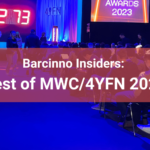

[…] Vía barcinno […]